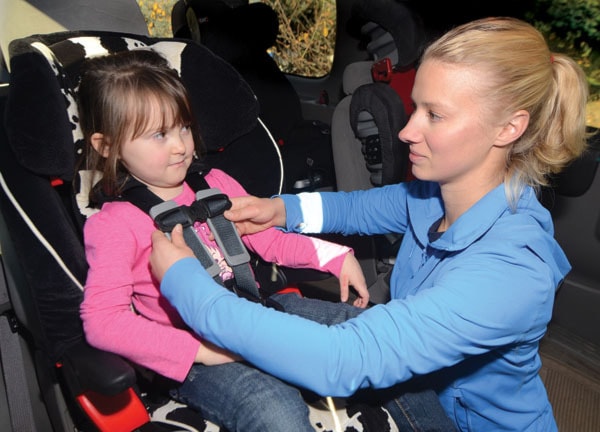Selina Metcalfe readily admits to making “every car seat mistake in the book” when it came to the installation and use of child car seats for her two children.
She found the installation process overwhelming, the manuals confusing and she just wanted to be sure she was doing the utmost to protect her kids while she drove.
But in trying to get help, Metcalfe realized there were few resources in the Shuswap.
“They’d tell you to go to Kelowna, Kamloops or Vernon to get someone to check it there, but that seemed a bit ridiculous... You want me to put my child in a car seat that I’m not sure is safe for him to be in and drive an hour down the highway to get it checked. It didn’t seem like a smart option.”
That’s when Metcalfe decided to educate herself and help other parents in the region.
She contacted the BCAA Traffic Safety Foundation and was put on a list to take their car seat safety course. It involved a program of home study, combined with a one-day course in Kelowna.
Metcalfe herself is operating entirely as a volunteer. She says there is tremendous satisfaction in helping parents ensure their children are as safe as possible, especially in light of the fact that automobile accidents are the number-one killer of young children.
In addition to specific car seat checks, Metcalfe also gives presentations to community groups.
The most common mistake parents make is moving their child from car seat stage too soon.
“People view it as a milestone like walking, and they seem to be eager to move their child up a stage. But that is not always the safest thing to be doing.”
This especially includes moving car seats from rear-facing to forward-facing.
Metcalfe says the current best practice in Canada recommends keeping children restrained in rear-facing car seats until age two or longer if possible. She points out in Sweden, where rear-facing seats are required to age four, there are practically no child deaths in vehicle accidents.
This is because a rear-facing seat cradles the child’s spine and head. In a forward-facing seat, there is a greater chance for a restrained child’s head to whip forward and cause injury or death.
She notes there are rear-facing seats on the market that will accommodate children up to 45 pounds before moving to forward-facing.
Depending on height and weight, children can move to a booster at around age five.
Metcalfe is willing to meet with any parent about any stage of car seat use to helping parents make the decision about when to stop using a booster seat altogether.
“Some people feel nervous asking for help, but they don’t have to feel that way. I’m a parent, I made mistakes too. Parents want to do the right thing for their kids, it’s just about educating them.”
She can be reached at 250-804-4238 or by email at selinajean@gmail.com. There is also a Facebook page at www.facebook.com/shuswapcarseats.
